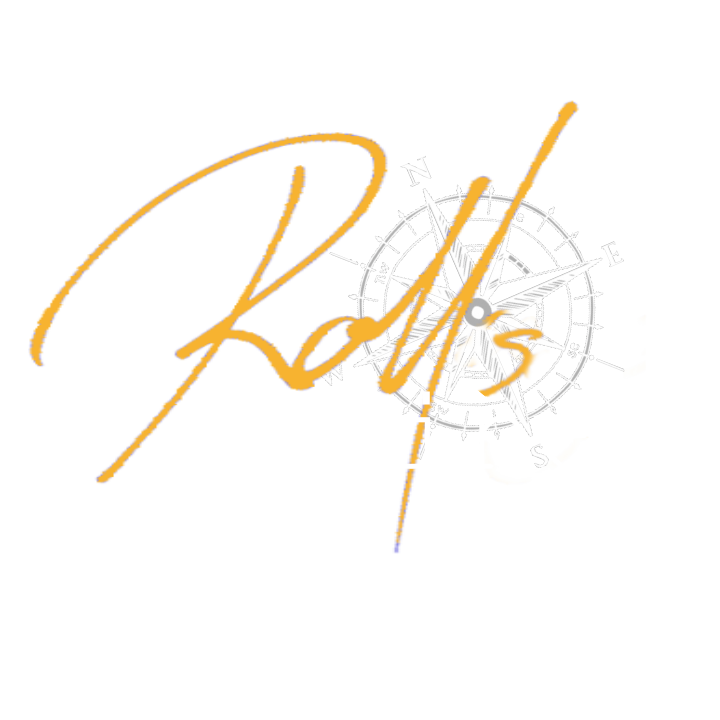A Note From Rolf
Dear fellow hiker,
Whether you're a seasoned nomad or embarking on your first Camino journey, planning can feel overwhelming. Having walked over 14 Camino's in the last three years and answered countless questions, I’ve created comprehensive PDF guides, videos and my interactive Chat Bot to provide personalized answers and support for your pilgrimage.
My guides cater to all budgets and travel preferences. From luxurious hotels to budget-friendly albergues, they cover a diverse range of accommodations that I personally have visited or stayed at. You'll also find recommendations for local cuisine, watering holes, and off-the-beaten-path treasures to explore along your route.
Buen Camino!


P.S.: The guides have clickable links, so be sure you have the Google Maps app installed on your device.

Camino FAQ'S


Everyone has their own favorite camino. Which the best one is really depends on what you are looking for or how much time you have. The best Camino de Santiago route ultimately depends on your personal preferences, physical abilities, and the experience you’re seeking. Here are some popular Camino routes to consider:
Camino Francés: The most popular and busiest route, offering a diverse landscape and a wide range of accommodations. It’s ideal for first-time pilgrims and those seeking a social experience. 21 to 31 days
Camino Portugués: Known for its coastal and inland routes, the Camino Portugués is a popular scenic option with historical significance. It’s a good choice for those who prefer a bit less crowded path than the Frances. 10 to 15 days
Camino del Norte: This route follows the northern coast of Spain, offering stunning ocean views and a bit more challenging terrain. It’s suitable for experienced hikers and individuals who appreciate natural beauty. 25 to 40 days
Camino Primitivo: As the oldest Camino routes, the Camino Primitivo is characterized by its rugged terrain and unspoiled landscapes. It’s a great option for adventurous pilgrims seeking a less-traveled path. 10 to 14 days
Other less popular Caminos: Via de la Plata, Camino Sanabres, Camino Ingles, Camino de Invierno, Camino Olvidado, Camino Vasco, Camino San Salvador and Camino Lebaniego are just some of the many alternative routes.
When choosing the best Camino de Santiago route, consider factors such as distance, difficulty, scenery, and the type of experience you hope to have.
The Frances is 790 Km – 490 Miles from SJPP and typically take about 30 to 40 days to walk
The Portuguese da Costa and Central are about 350 km and take 10 to 14 days.
The Camino del Norte is 850km – 513 Miles and takes about 35 to 43 days
The Via de la Plata is 1007 km – 620 Miles and takes about 45 to 55 days
The Camino Primitivo is 315 km – 195 Miles and can be done in 12 to 18 days
The Ingles is 120 km – 75 Miles and takes 5 to 7 days to walk
Many people choose to walk shorter sections of the Camino instead of the entire route. Most Spaniards start their Camino Frances in Sarria 113 km or Portugués in Tui 116 km.
While the timing ultimately depends on individual preferences, there are some general considerations to keep in mind. Ultimately, the best season to walk the Camino de Santiago is a personal decision based on factors such as weather preferences, tolerance for crowds, and the type of experience you seek.
Spring (March to June): This season is popular for walking the Camino due to milder weather, blooming landscapes, and fewer crowds compared to the summer months. The temperatures are generally comfortable for walking, making it an ideal time to enjoy the journey.
Summer (June to August) It’s important to note that the summer months, particularly July and August, tend to be the busiest and warmest periods along the Camino. While some people enjoy the lively atmosphere during this time, others may find the crowds and high temperatures less desirable.
Fall (September to October): Similar to spring, the fall season offers pleasant weather and beautiful scenery. Many pilgrims prefer this time of year to avoid the summer crowds and the potential heat. The autumn colors can also add a special touch to the pilgrimage experience.
Winter (October to February) is ideal if you want fewer pilgrims and fewer acommodation choices. But if don’t mind a bit of rain or cold weather it still is a great time to walk. Walking the Camino de Santiago in winter can be a unique and rewarding experience, but it requires careful preparation. The winter months, particularly January and February, are less crowded, allowing for a more solitary and reflective journey. It’s essential to be well-equipped for the colder weather and potential snowfall.
Walking the Camino is not quite as cheap as you would expect. The exact figure for the total cost of walking the Camino de Santiago, can vary greatly depending on individual preferences and circumstances. However, many pilgrims budget around €25-50 per day for a modest but comfortable pilgrimage experience. A bed in an Albergue will cost from €5 to €25 a night depending on the level of comfort, and eating a Menu del Dia or Pilgrims Menu will set you back another €10 to €15.
Remember to pack as lightly as possible, prioritizing essentials and versatile items. It’s also helpful to check the weather forecast for your planned route and season to adjust your packing list accordingly. Additionally, keep in mind that laundry or clothes washing facilities are available at most all albergues or hostels.
For a checklist and tips on what to take please see the packing section.
Please use the chat window on the bottom right to ask me anything Camino related…
Camino Guides
Camino Francés
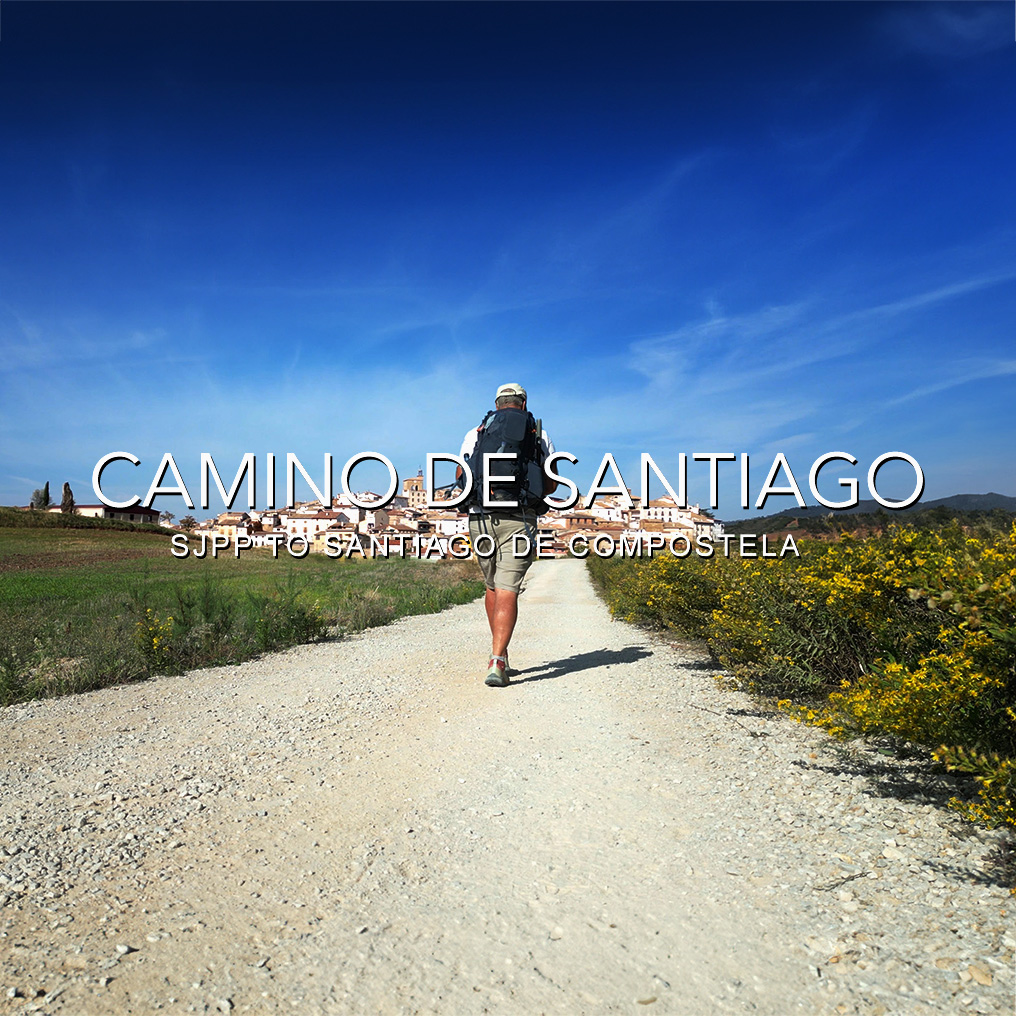
This Guide Covers:
Camino De Santiago Francés
St Jean Pied de Port to Santiago 33 Stages
Includes:
St Jean Pied de Port
Roncesvalles
Pamplona
Logrono
Burgos
Leon
Sarria
Santiago de Compostela
Camino del Norte
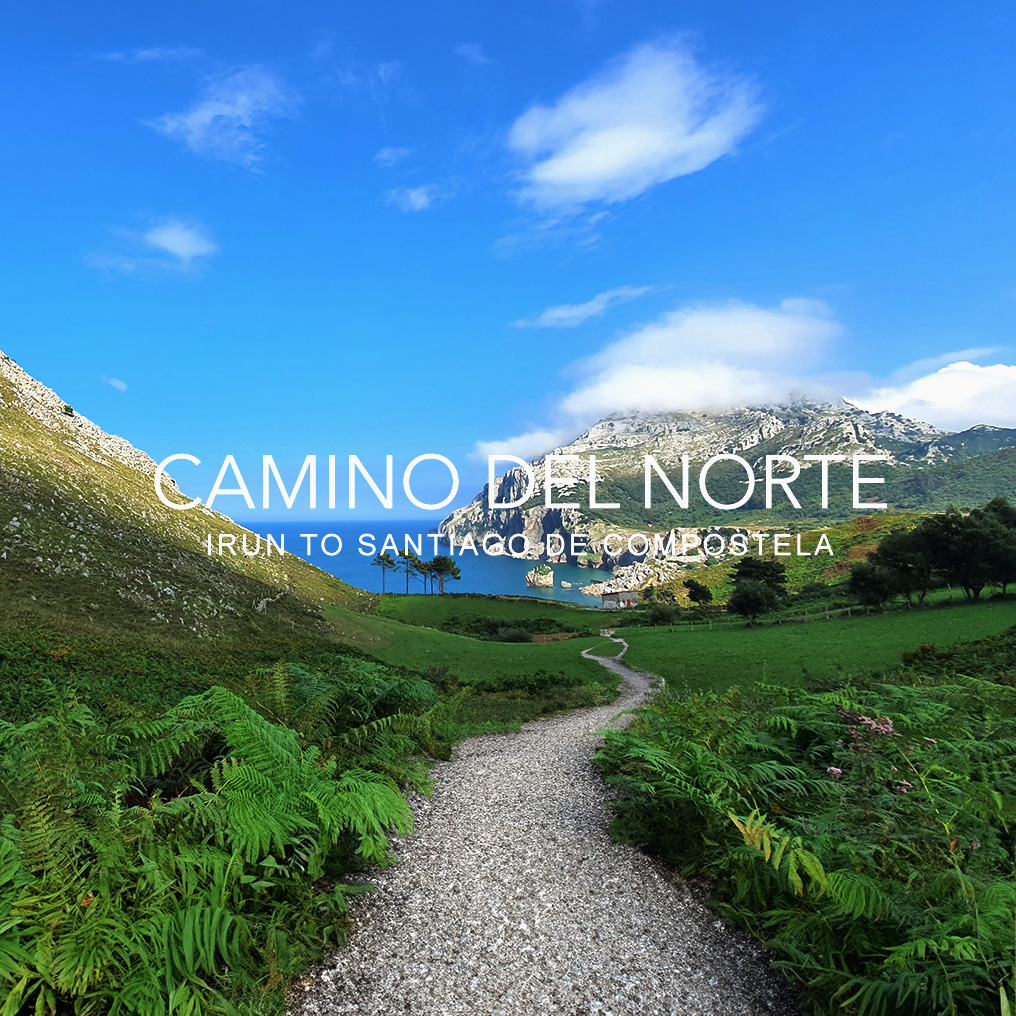
This Guide Covers:
Camino del Norte
Irun to Santiago in 31 Stages
Includes:
Irun
San Sebastian
Bilbao
Santander
Gijon
Santiago de Compostela
Camino Primitivo
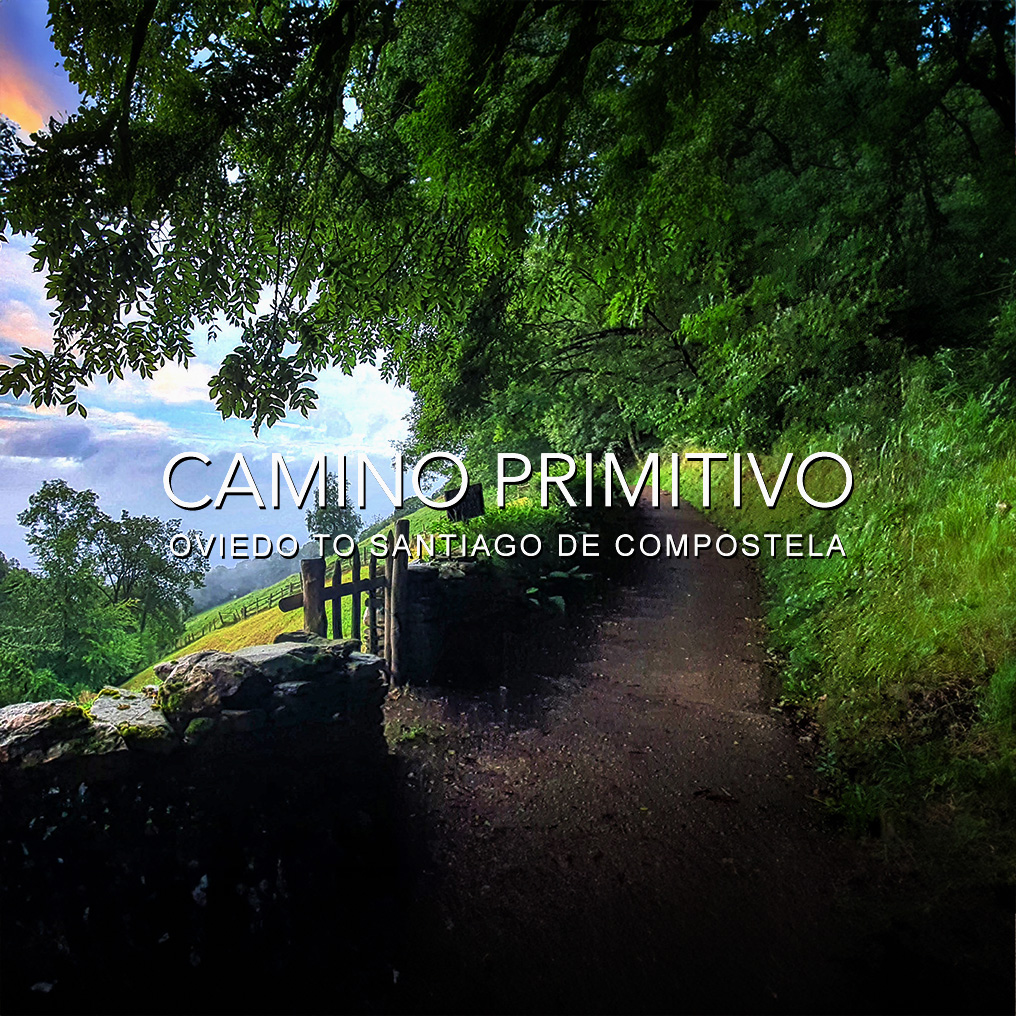
This Guide Covers:
Camino Primitivo
Oviedo to Santiago in 12 Stages
Includes:
Oviedo
Pola de Allende
Lugo
Santiago de Compostela
Camino Finisterre
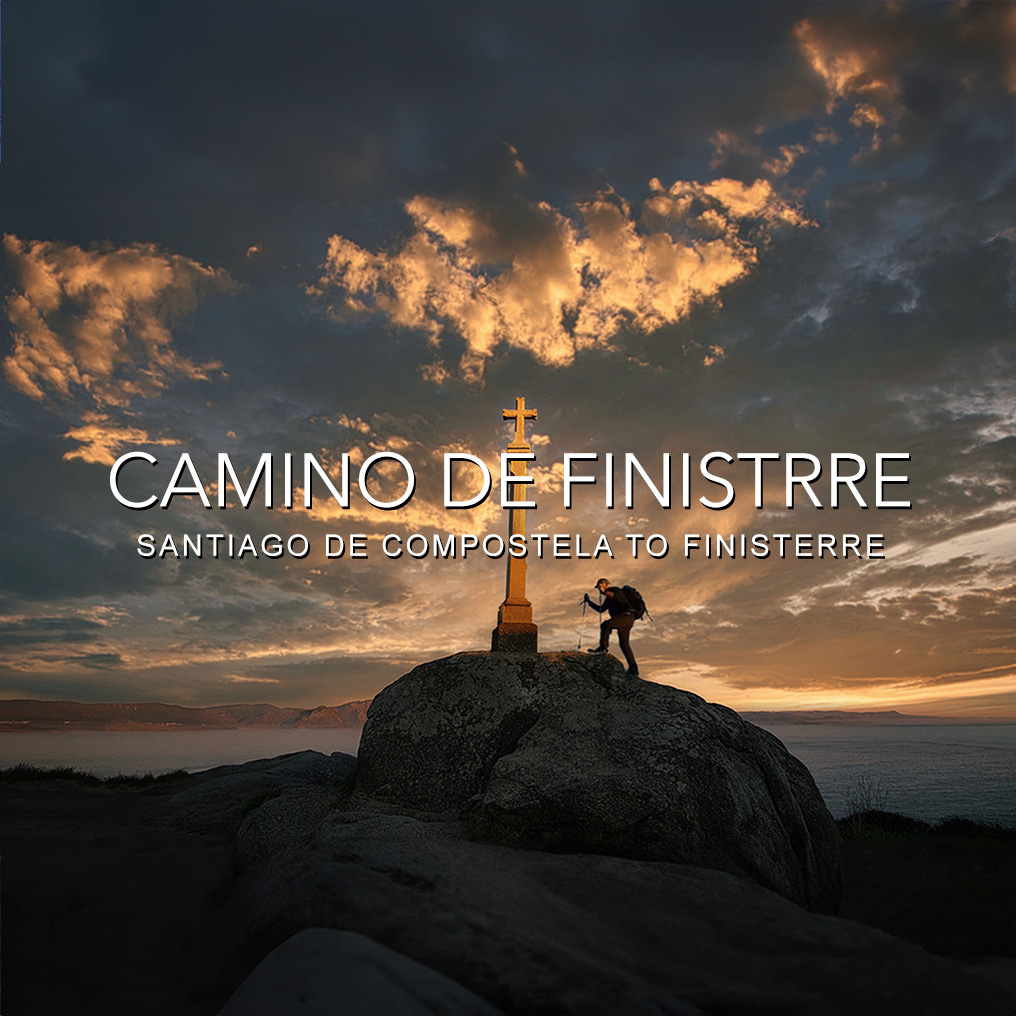
This Guide Covers:
Camino de Finisterre
Santiago to Finisterre in 3 Stages
Santiago to Muxia in 3 Stages
Includes:
Santiago de Compostela
Finisterre
Muxia
Camino Português Central - Porto

This Guide Covers:
Camino Português - Central Route
Porto to Santiago in 12 Stages
Includes:
Porto
Tui
Santiago de Compostela
Camino Português - Lisbon
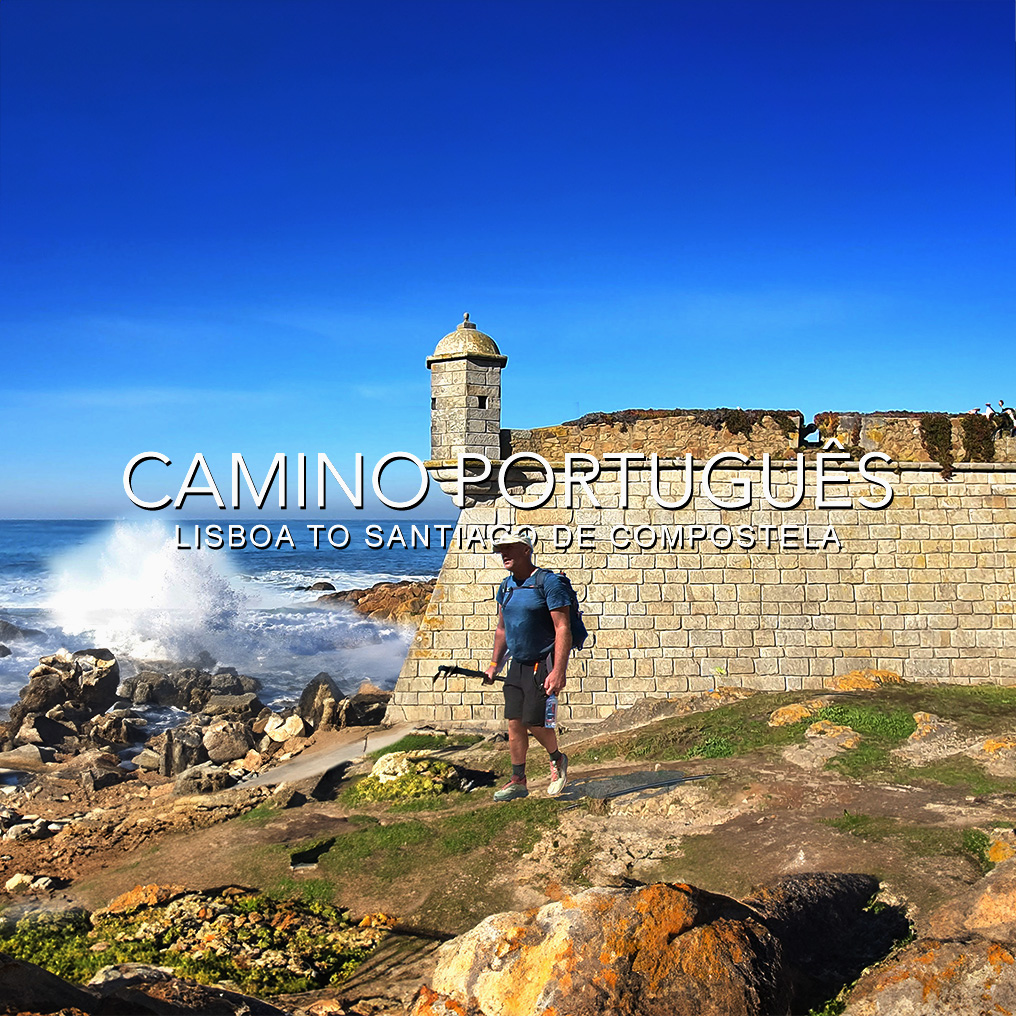
This Guide Covers:
Camino Português - Lisbon
Lisbon to Santiago via Porto in 20 Stages
Includes:
Lisbon
Tomar
Porto
Vigo
Santiago de Compostela
Camino Português da Costa - Porto
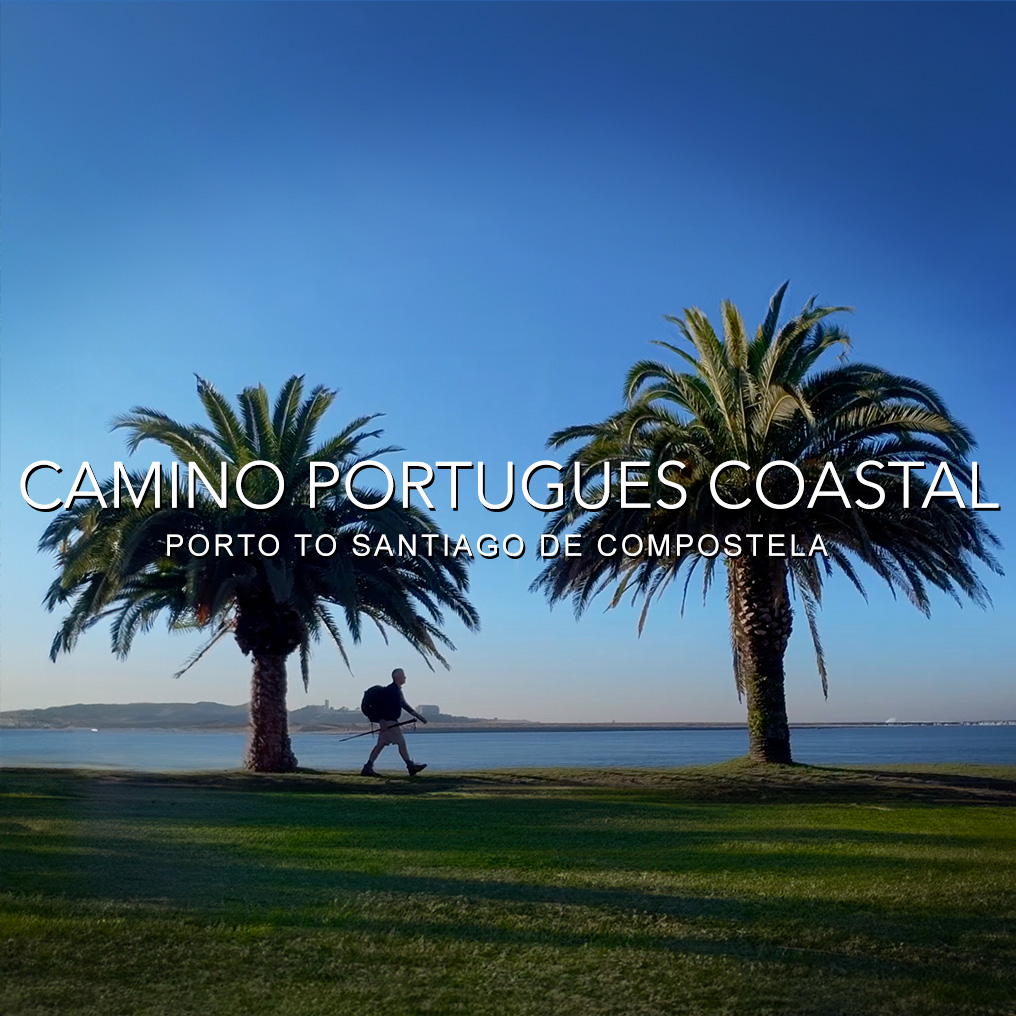
This Guide Covers:
Camino Português - Coastal Route
Porto to Santiago in 10 Stages
Includes:
Porto
Vigo
Santiago de Compostela
Via de la Plata
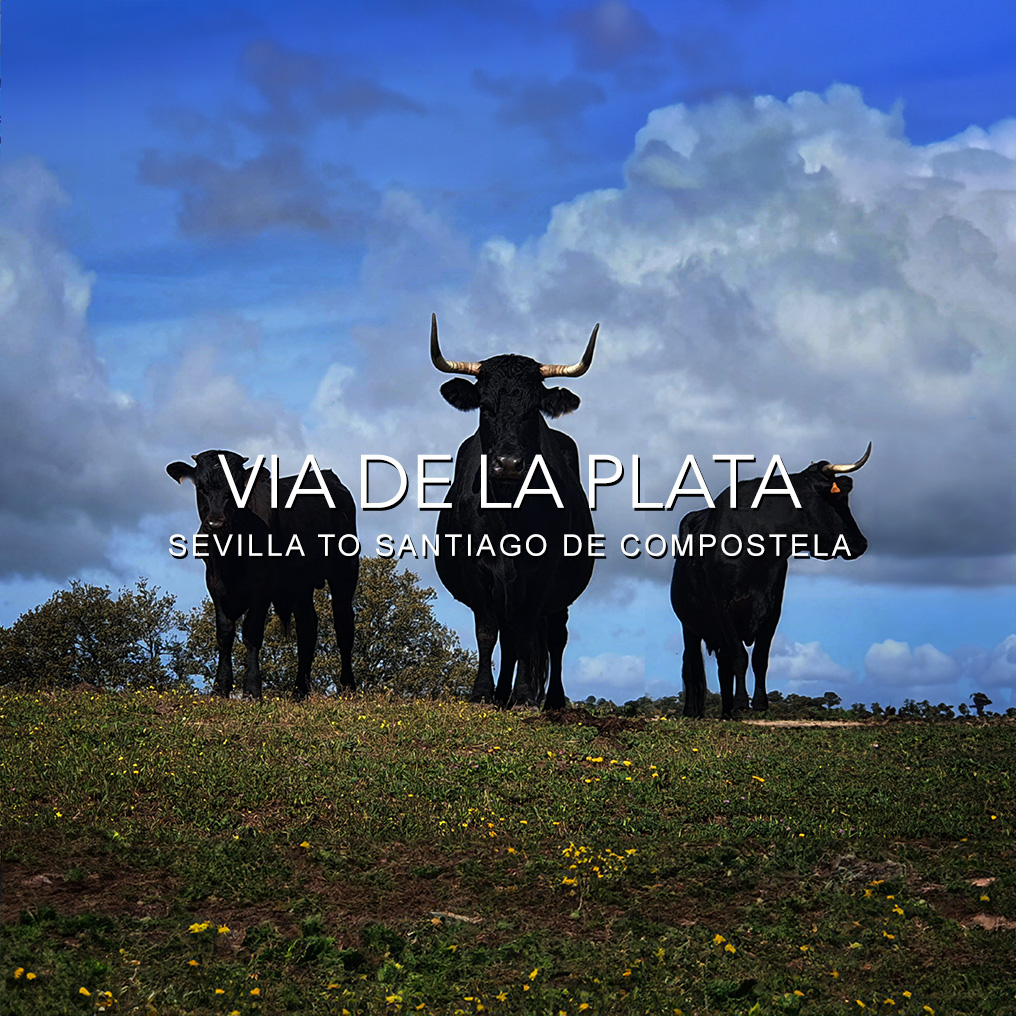
This Guide Covers:
Camino Via de la Plata
Seville to Santiago in 37 Stages
Includes:
Sevilla
Zafra
Merida
Caceres
Salamanca
Zamora
Ouerense
Santiago de Compostela
Camino Sanabrés
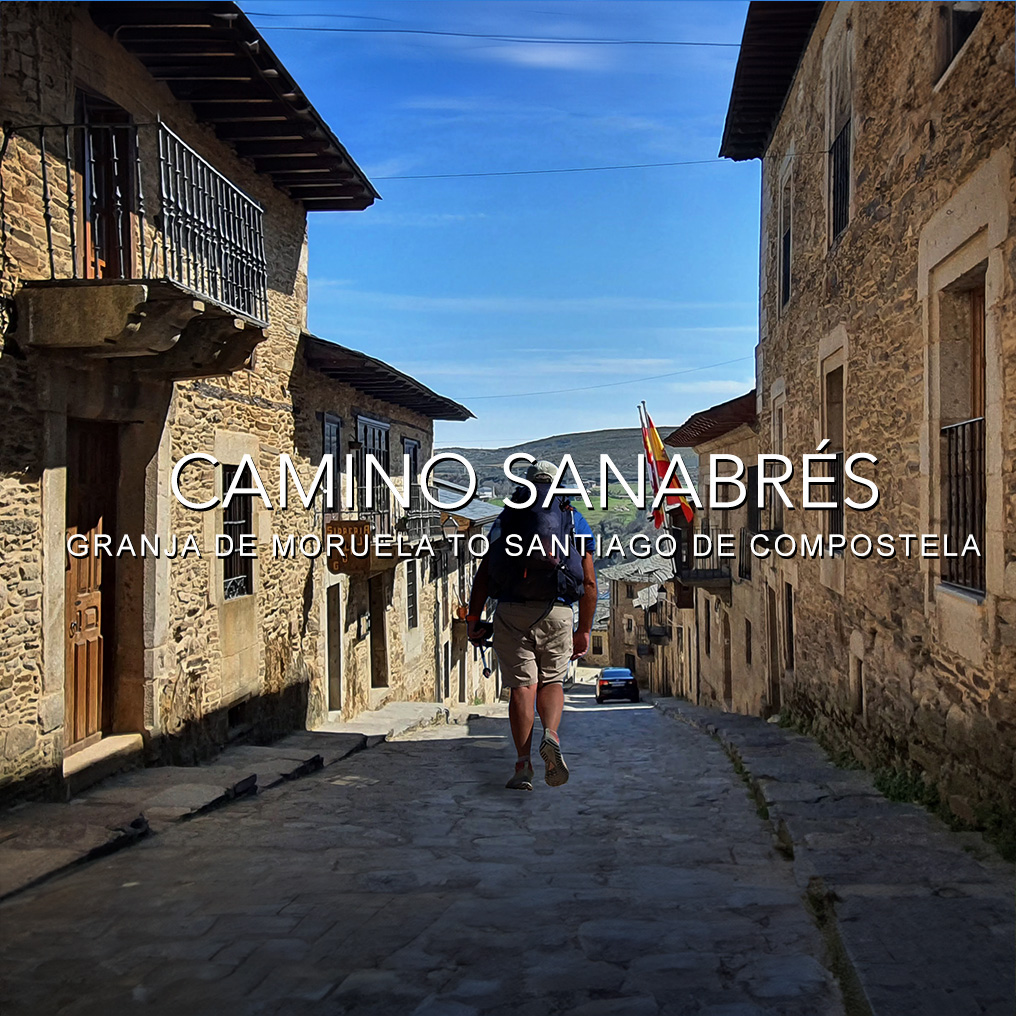
This Guide Covers:
Camino Sanabrés
Seville to Santiago in 14 Stages
Includes:
Puebla de Sanabria
Ouerense
Santiago de Compostela
Camino Ingles
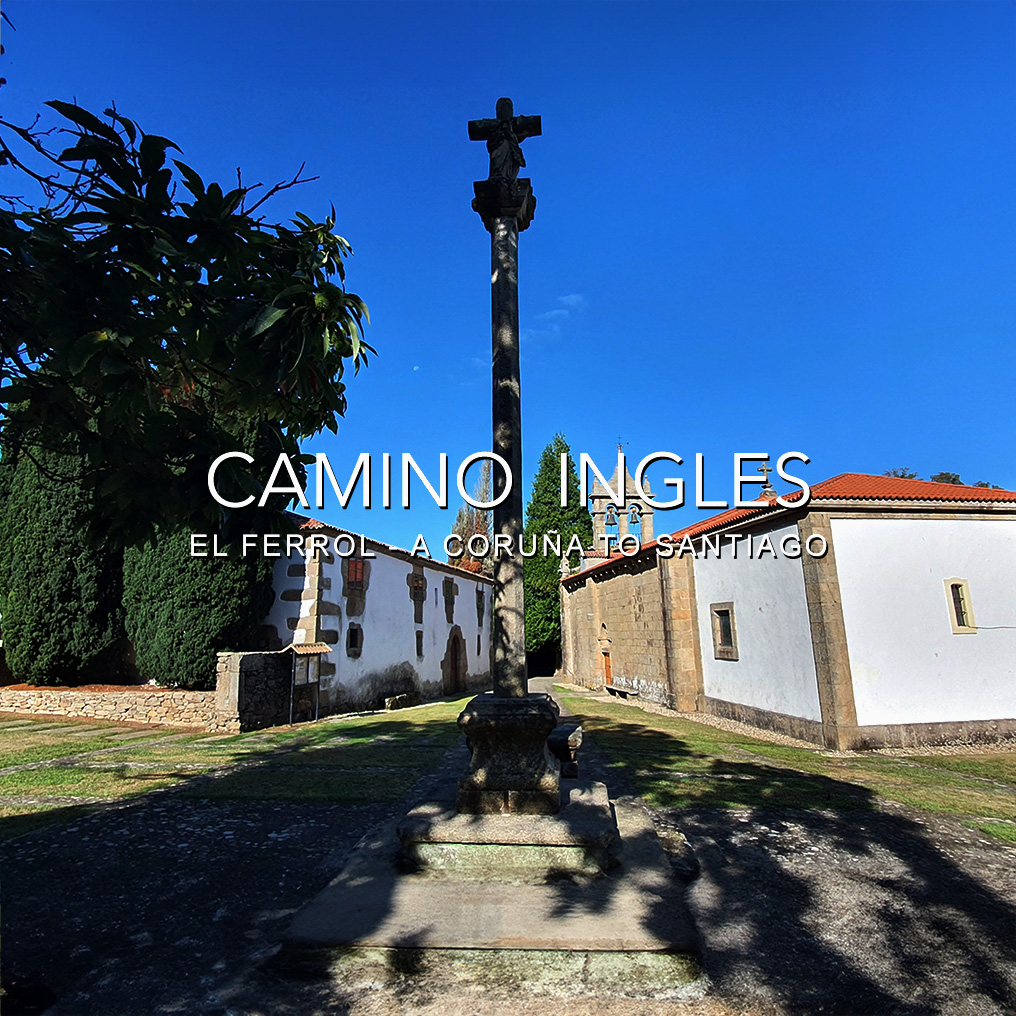
This Guide Covers:
Camino Ingles
A Coruña to Santiago in 3 Stages
El Ferrol to Santiago in 4 Stages
Includes:
A Coruña El Ferrol
Segude Pontedueme
Betanzos
Santiago de Compostela
Camino de Invierno
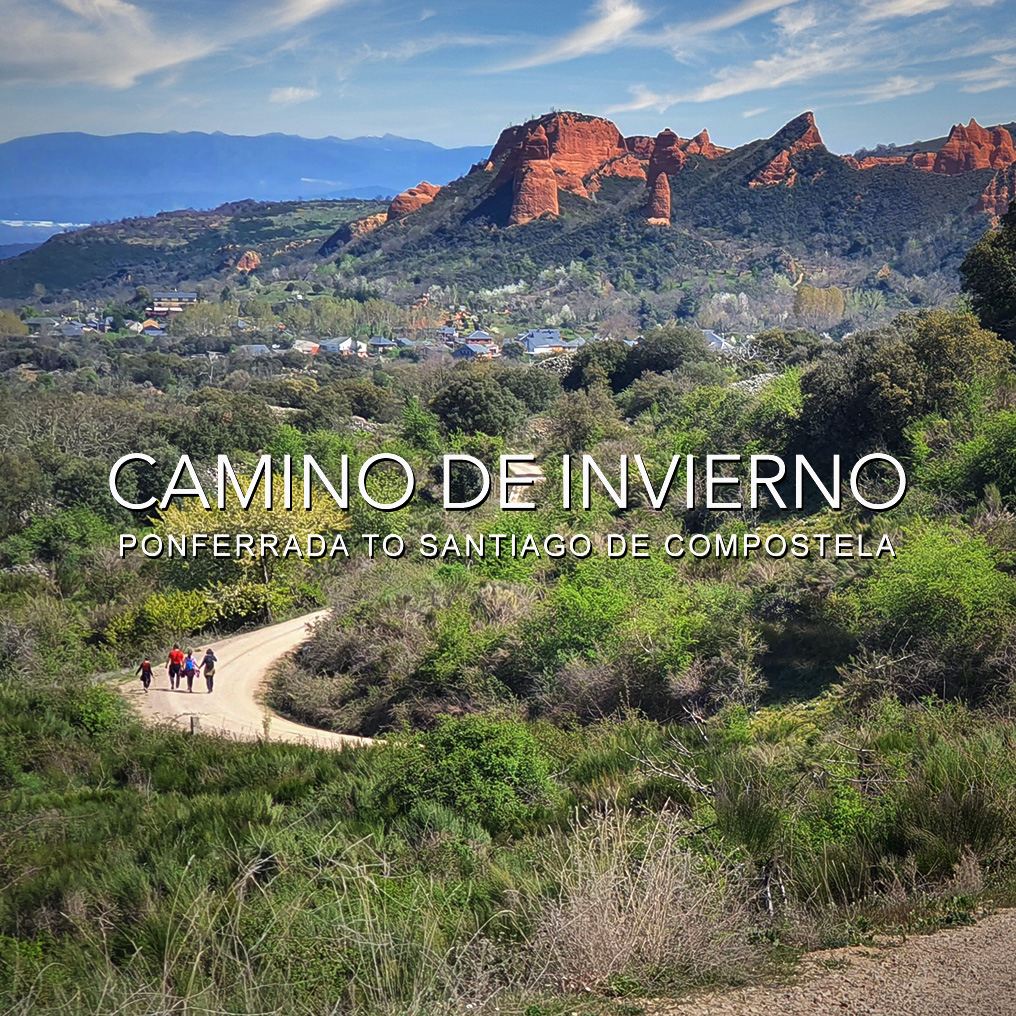
This Guide Covers:
Camino de Invierno
Ponferrada to Santiago in 10 Stages
Includes:
Ponferrada
Monforte de Lemos
Santiago de Compostela
Camino San Salvador
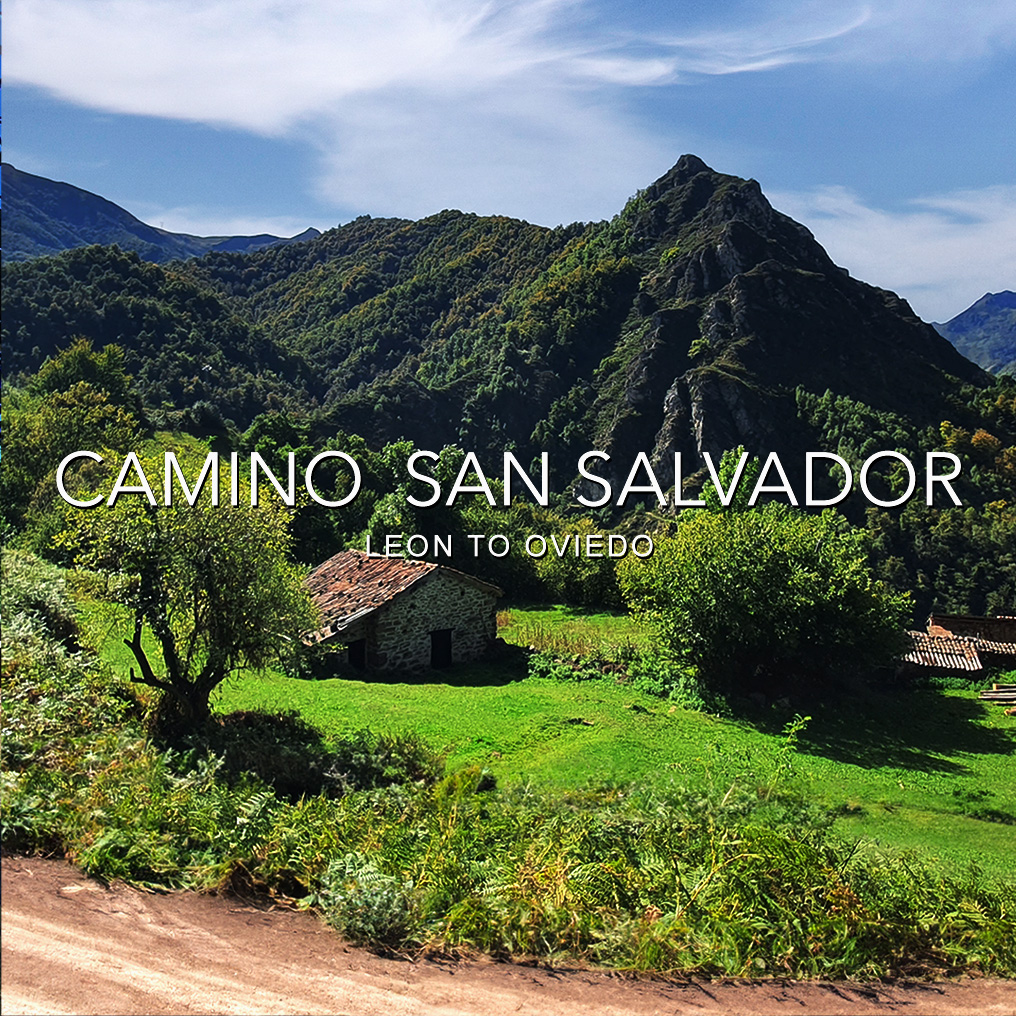
This Guide Covers:
Camino San Salvador
Leon to Oviedo in 5 Stages
Includes:
Oviedo
Leon
Camino Lebaniego

This Guide Covers:
Camino Lebaniego
San Vicent de le Barquera to Potes in 3 Stages
Includes:
San Vicente
Potes
Camino Vadiniese

This Guide Covers:
Camino Vadiniese
Potes to Mansilla de las Mulas in 6 Stages
Includes:
Potes
Mansilla de las Mulas
Camino Packing Checklist
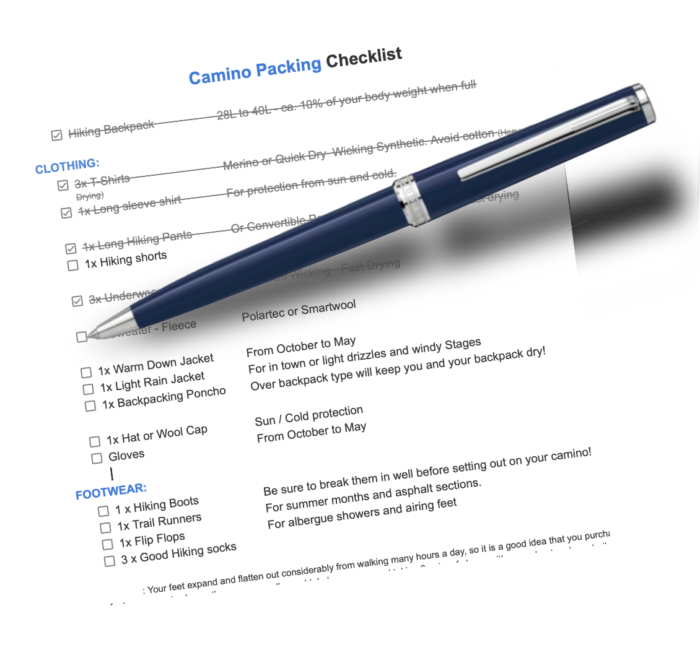
Camino Videos
Camino Frances Summer - Spain
This video is about:
The Camino Francés (French Way), a summer walk on the most popular pilgrimage route from St Jean, France. Typically it takes at least four to five weeks to cover the 790 km long route from Saint Jean Pied de Port to Santiago de Compostela.
Run Time: 1h 18 Min
Camino Francés Winter - Spain
This video is about:
The Camino Francés (French Way) starting in Roncesvalles, Spain in the winter. Typically it takes at least four weeks to cover the 755 km long route from Roncesvalles to Santiago de Compostela, allowing for a few days rest days along the way.
Run Time: 43.22 Min
Camino Português Central - Portugal
This video is about:
The Camino Português Central (Central Way), a popular Camino de Santiago route, with the most deep-rooted historical tradition. Typically it takes at least four weeks to cover the 260 km long route from Porto to Santiago de Compostela, allowing for a few days rest days along the way.
Run Time: 40 Min
Camino Português - Portugal
This video is about:
The Camino Português (Portuguese Way), a popular Camino de Santiago route, with the most deep-rooted historical tradition. Typically it takes at least four weeks to cover the 675 km long route from Lisbon to Santiago de Compostela, allowing for a few days rest days along the way.
Run Time: 8 Min
Camino del Norte - Spain
This video is about:
The Camino del Norte is and alternative route to the Frances along the North coast of Spain. It takes about four weeks to cover the 825 km long route from Hendaye in France to Santiago de Compostela.
Run Time: 1.28 Min
Camino Primitivo - Spain
This video is about:
The Camino Primitivo is the original pilgrimage route in Spain, with the most deep-rooted historical tradition. Known to be one of the most difficult but picturesque pilgrimage walks. It takes about two weeks to cover the 320 km long route from Oviedo to Santiago de Compostela.
Run Time: 33.22 Min
Camino Via de la Plata - Spain
This video is about:
The Camino Via de la Plata is a South to North pilgrimage route on the Camino de Santiago in Spain. Known to be one of the longest but most picturesque pilgrimage walks. It takes about six weeks to cover the 1007 km long route from Seville to Santiago de Compostela.
Run Time: 1H.15 Min
Camino Sanabrés - Spain
This video is about:
The Camino Sanabrés pilgrimage route on the Camino de Santiago in Spain. Is a variant of the Via de la Plata which is known to be one of the longest and most picturesque pilgrimage walks. It takes about six weeks to cover the 1007 km long route from Seville to Santiago de Compostela. The Sanabrés takes about14 days and about 300 kilometers.
Run Time: 40 Min
SUBSCRIBE TO MY YOUTUBE CHANNEL HERE
About Rolf
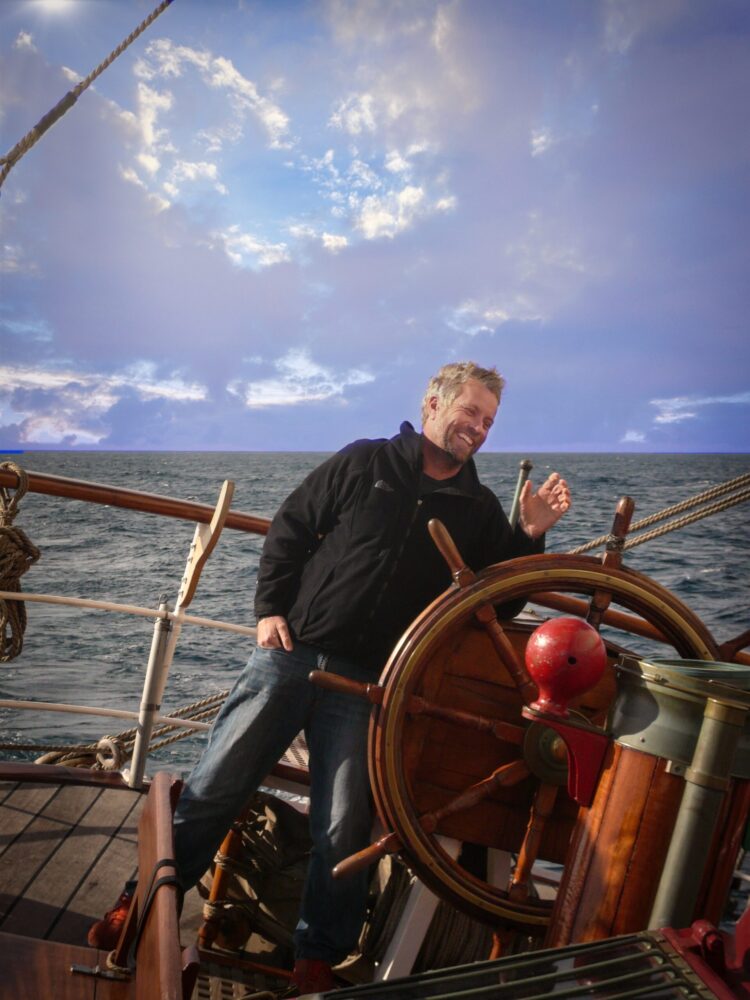
Rolf Magener, originally from South Africa, is a passionate globetrotter who, for the past 18 years, has undertaken a continuous journey across the world. His travels have taken him to more than 125 countries and all seven continents several times.
He thrives on seeking adventure in the most remote corners of the planet, whether it's navigating the Amazon River, exploring Antarctica, or embarking on over 13 reflective Camino de Santiago pilgrimages in Spain within the last three years.
In addition to his adventurous pursuits, Rolf dedicates substantial periods to silent meditation in secluded monasteries and devotes his time to volunteering at places like Mother Teresa's in Calcutta.
When he's not globe-trotting for adventure, Rolf shares his entrepreneurial expertise in his books and by speaking at conferences or consulting with companies on business development strategies. With a track record of founding multiple successful businesses.
Rolf has dedicated more than 25 years to studying the success mindset. He has developed several training systems that distill his extensive knowledge. These systems are specifically designed to guide individuals towards their "true north" and assist them in achieving their ultimate "dream life."
Contact Rolf
Want To Contact Rolf?
For speaking, podcast and media inquiries or collaboration opportunities, please submit a detailed proposal.
If you you need help with anything at all here are the best ways to reach us.
Tel.: +1- 505-585-1066
Email: [email protected]
© 1994 - 2023 Rolf Magener. All rights Reserved
